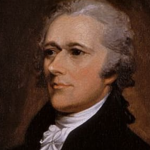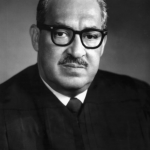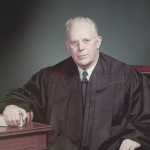
With the nomination and Supreme Court confirmation hearings of Judge Brett M. Kavanaugh, the Senate confirmation process of Supreme Court nominees has been much in the news.
Article II of the United States Constitution states that the President shall have to power, with the advice and consent of the Senate, to nominate Judges to the Supreme Court. So, under the U.S. Constitution, the power to put a Supreme Court justice on the bench is shared by both the President and the Senate.

According to Alexander Hamilton, who was a signatory to the Constitution, giving the President the sole power to put a judge on the Supreme Court would not be wise as the President “would be governed much more by his private inclinations and interest.” So, the founders wisely decided to divide this power between the President and the Senate.
In modern history, when the President nominates a person to the Supreme Court, the Senate Judiciary Committee holds hearings and questions the nominee. This process has frequently been contentious.

In June of 1967, President Lyndon Johnson nominated the first African American to the Supreme Court, Thurgood Marshall. As an attorney in 1952, Marshall, had successfully argued the landmark school desegregation case of Brown v. Board of Education before the Supreme Court. At his Senate confirmation hearings in 1967 Marshall faced intense opposition from the chairman of the Senate Judiciary Committee, Senator James Eastland of Mississippi, who was a staunch segregationist. Nevertheless, Marshall performed well at the hearings and the Senate confirmed him.
The Senate does not always go along with the President’s pick. Since the Constitution went into effect, the Senate has voted to reject the President’s nominee 12 times. The last nominee to be defeated in the Senate was President Regan’s pick in 1987, Judge Robert Bork. However, as in the case of President Obama’s 2016 nominee to the Court, Judge Merrick Garland, sometimes the Senate takes no action on a nominee, and the nominee is not confirmed.
Which justices sit on the Supreme Court has a profound influence upon the development of criminal law.

For example from 1953 until 1969, such as in the case of Miranda v. Arizona, Chief Justice Earl Warren led the Supreme Court to expand protections for criminal defendants. However from 1986 until 2005, Chief Justice William Rehnquist led a Supreme Court that narrowed some of the constitutional protections for criminal defendants that the Warren Court had established.
If you are interested in learning more about the Supreme Court and its justices, an excellent resource is the Oyez website. There you can review short biographies of the justices, review case summaries, and listen to recordings of Supreme Court arguments.
Posted in Criminal Procedure, Federal Criminal Defense
